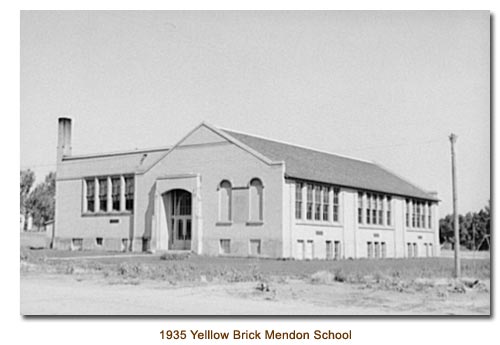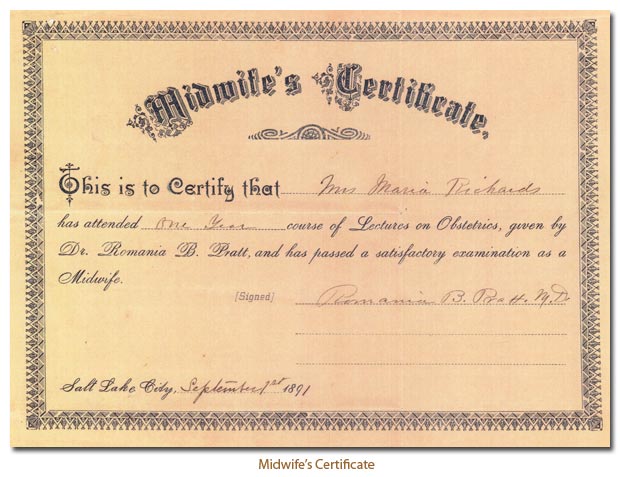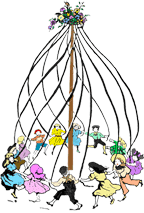History of Mendon
Mendon was the second settlement founded in Cache Valley. The town is pleasantly situated in the midst of a rich agricultural and fruit growing section 8 miles west of Logan, and 87 miles by rail from Salt Lake City. It is nestled in the heart of a great natural amphitheater formed by the most picturesque section of the entire Wasatch Range. The beauty of this natural scenery adds attractions that can scarcely be surpassed.
I believe that scores of people born and reared in Mendon are as deeply impressed by the serenity of the old mountain as was the boy Earnest in that famous old story. “The Great Stone Face.”
In 1857 the Hill brothers, Robert and Alexander exploring in Cache Valley were attracted by these surroundings as well as the deep fertile soil and sparkling springs of water. They each took 40 acres of land and together built a log house on one of the streams flowing through the north part of the present town site.
The next year the move south took all of the people from the valley. However, on May 2 1859, Alexander Hill returned with some of his sons, as also Rodger Luckham and family including Robert Sweeten a step son, Charles Atkinson and wife, Alfred Atkinson and family, James G. Willie and family, Charles Shumway, Sr. and family, Andrew P. Shumway and wife, Peter Larsen and Isaac Sorensen. This group became the first settlers of Mendon.
In the autumn of 1859, the Richards came followed by Andrew Andersen and Nicolai Sorensen and family. The Bakers, Woods, Hancocks, Gardners, and Birds arrived in 1861, Henry Hughes in 1862.
The Atkinsons left Mendon. The other early pioneers all remained, and became prominent in civil, social, and religious affairs. Charles Shumway, Sr. was a caption in Brigham Young’s first company; Andrew P. Shumway became the first Bishop of Mendon and the first president of the Cooperative store, being succeeded in both positions by Henry Hughes in 1869. James G. Willie was the first postmaster, George W. Baker the first mayor, Isaac Sorensen wrote the Mendon history. We are indebted to him for all data herein contained.
The town at first was called the North Settlement. At the suggestion of Heber C. Kimball, it was styled Mendon, the name of his birthplace in the east. In the spring of 1861 the place consisted of two rows of log houses built to form a fort on the southeast corner of the present public square, and the log schoolhouse on the southeast corner of where the new school building now stands. The logs for this structure were dragged from the mountain through four or five feet of snow, later a rock wall 6 feet high was built around it [the rock church] enclosing one acre as a protection against Indians.
1861 was noted for its Indian raids. Many of the horses and cattle were driven off. Bradford Bird was wounded in one of the battles with the Indians, the animals were never recovered. Later a three-year-old child was stolen and she was never found. They fought Indians, grasshoppers, crickets, drought and frost, but the were real pioneers, literally filled with determination and on they went. In 1864 they surveyed their city plat and moved onto the city lots in much better houses. In 1866 the rock church was built and by 1869 they had improved their implements and methods until one thousand acres was tilled and irrigated by the streams from the West Mountains.
They constructed a dam in Gardner’s Creek, three miles south of town, placing under irrigation five hundred acres more. Several thousand acres were enclosed in what was known as the big field, where their animals were pastured in the autumn.
The crops were grown on the fertile stretches skirting the town on the east. From the meadows lying between this stretch and the river, hay was cut and stored for winter, the foothills and mountainsides being used as grazing areas. No dry farm crops were grown.
In addition to all of the work incident to colonization the people answered the call each year for teams to make the long hazardous journey to Omaha to bring the poor and their belongings to Utah. Amenzo W. Baker made the journey in 1861, Isaac Sorensen and Peter Larsen in 1862, Ralph Forster, Joseph Lemmon and Albert Baker in 1863. Joseph Richards in 1864, Charles Bird, Jacob F. Sorensen and Joseph Hancock in 1866.
During these early years each settlement organized its own recreation, and arranged its own amusements. Glee clubs, bands, dramatic clubs, etc. were prominent. Mendon was fortunate in having, for several years the services of Adam C. Smyth, one of Utah’s best music teachers. He also taught the district school. The effects of his work were felt for the next quarter of a century, and some real colorful people were developed in the music and dramatic business. Prominent among the musical organizations were: The Martial Band under Frank Williams, and later the Sweeten’s Brass Band, known over a wide area and appreciated by many people.
The early people here were strong for education. The old log school house was replaced by the big stone building, and to this was added in 1899, the red brick school providing ample room, and all done under the old trustee system. Mendon patronized liberally the Brigham Young College and the Utah Agricultural College providing many trained people who now fill positions elsewhere.
In addition to them we record a long list of graduate nurses, I might add here the two first graduates from the nursing school in Cache Valley were from Mendon, Marie Richards and Lucy Baker, under Dr. D. C. Budge.
The coming of the Utah Northern Railroad, December 22, 1872 marked a new epoch for Mendon. This established a ready market for all products of the farm, stimulated production as well as expansion. We might say it placed Cache Valley in line for its rapid march toward its present commercial success, and Mendon realized its full share of benefits.
The racetrack north of town was finished in 1880, and in 1881, special trains were run for the races there, thus a new enterprise was launched which became profitable. The most prominent racehorse breeders were, Willard Richards, Andrew Bigler, and William Longstroth. A larger number were engaged in the draft horse business, a line being built up that is worthy of mention. The principle producers were: John Walker, Bishop Henry Hughes, Robert Sweeten and Andrew Bigler.
Mendon of today is different to the Mendon of 1861. The town plat has been twice extended and many homes built. Two thriving stores are established which serve the people well. On the ground where once the old fort stood is now seen the new ward chapel built at a cost of $25,000. We are favored with two railroad stations and a post office. To the east on the public square stands the new schoolhouse, of which the people here are justly proud. This was erected in 1935, cost of $33,000 and embraces four splendid class rooms one large gym, and one play room in the basement. Principle Durrell Hughes with his three associate teachers, and 120 pupils all of Mendon, announces a most successful year of school with every phase of work much facilitated by the improved conditions.
Our assets are growing. The development of the dry farm business has brought under cultivation several hundred acres of foothills, which now produce abundant hard and soft wheat to the annual output. Many dairy herds are pastured on the meadows east of town, and the rich alfalfa lands produce a surplus of feed as well as astonishing crops of alfalfa seed. The Hyrum Dam now delivering water through its canal, now places under irrigation five-hundred additional acres of rich ground capable of growing heavy crops of sugar beets, peas, beans, all kinds of grain, fruits or any other crop that can be grown anywhere in Cache Valley.
This will provide employment for a new army of people. Produce feed for many new herds and flocks of poultry. These two departments are rapidly growing in Mendon. Well-bred chickens and purebred dairy cows are found everywhere. Splendid opportunities await the energetic young people here for the town is connected with the outside world by two railroads and highways in every direction.
Mendon has no millionaires, none extremely rich, none seriously poor. Very few have ever needed help. Ninety percent own their own homes. Mayor Nephi C. Sorensen gives these figures: Our unsurpassed water system, installed at a cost of $15,000 is fully paid and has a sinking fund of $1500. The city its self has no debts, its treasury rests with a checking fund of $2000. So Mendon City is out of debt. Mendon ward has no debts, many of the people are out of debt, so my conclusion is: the people are happy.
Mendon has always been loyal. Two volunteers served in the Spanish American War, thirty-six were enlisted in the Great War. There now lies in our cemetery one gold star mother, Captain Jack of the Texas Rangers, the only one buried in Utah, two members of the Mormon Battalion and seven veterans of Indian Wars.
In conclusion, let me mention our greatest of all assets, the one of which I am most proud: this large group of splendid young people, more active, more progressive than any I have known, I am hoping their present serenity will be as positive and lasting as that issue expressed in the grand old mountain for I am interested not only in the present but the future of Mendon.
![]()
